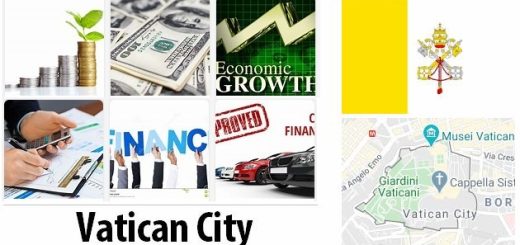Estonia Market Opportunities
MFA: Strategic opportunities for foreign exporters
The coronavirus pandemic, which hit Estonia already at the end of February, disrupted the planned deficit of 0.7% of GDP for 2020 and the path to a balanced state budget in the following years. In them, the exporting country based on digitization expected to grow the economy with an increase in financial support for research and development and the agricultural sector to strengthen its competitiveness. Border closures in March 2020 showed the vulnerability of the tourism industry, which accounted for 8% of GDP and directly employed over 22,000 people. In the pandemic, on the contrary, it strengthened its own developed chemical and pharmaceutical industry thanks to a new focus on medical devices and medicines.
Unemployment grew by 4,000 people per month, and at the end of 2020, at 6.9%, it reached almost double the previous years. In order to stop the overall decline of the Estonian economy, in April 2020 the government prepared a supplementary state budget with a double-digit public debt amounting to 15.2% of GDP. Also for the year 2021, the state budget takes into account the coronavirus pandemic, including a further increase in public debt above 20% of GDP and an increase in unemployment. However, with the expected rebound in industrial production, GDP growth should return to positive numbers in 2021.
In addition to adjusting the state budget for 2020, the government already accepted the first financial package in the amount of EUR 2 billion, i.e. 7% of GDP, as general aid to the entire economy, starting on March 20, a week after the declaration of the state of emergency. For example, it reserved EUR 25 million for the tourism sector, EUR 10 million for micro and small businesses, support was received by the national rail and air carriers, and EUR 70 million by local governments to maintain planned investments.
The main task of the government was to stop the uncontrollable increase in unemployment, which reached 7.4% of the working population in May 2020, but managed to reduce it to 6.9% by the end of 2020. In addition to direct support to employers, the state guaranteed entrepreneurs up to EUR 500 million for loans, liquidity loans or investment loans. The state budget for 2021 approved in December took into account the coronavirus pandemic with a state budget deficit of EUR 2 billion and gave the government the power to take additional loans or issue bonds of up to EUR billion if necessary. For 2021, Estonia is counting on EUR billion in the form of basic EU subsidies.
Post-COVID-19 opportunities
Estonia’s good initial economic situation with digitization, low unemployment and on the way to a balanced state budget allowed relatively smooth handling of the health challenges of the spring and autumn waves of the coronavirus pandemic – at its peak, only 60% of hospital beds and only 17% of intensive care beds were occupied.
In the economy, however, the sectors of tourism with accommodation and gastronomy, culture, trade, services and logistics, transport and oil shale mining were severely affected. The efforts of the Estonian government to revitalize the economy will therefore be primarily aimed at the basic sectors of the economy in 2021, i.e. infrastructure, energy, chemistry and construction.
Transport industry and infrastructure
Already in the spring of 2020, local governments received the first state aid package of EUR 70 million to maintain planned investments in the repair and construction of buildings and EUR 30 million to modernize regional roads. Despite the pandemic, according to the long-term plan until 2030, the expansion of highways from two lanes to four lanes from Tallinn to Tartu, from Tallinn to Pärnu and from Tallinn to Narva continued. On the contrary, considerations about the construction of a new tram depot in Tallinn with the extension of the tram line have not made any progress.
Energy industry
According to allcountrylist, for Estonia, the ongoing strategic task is to ensure energy independence from Russia and effective connection to the European energy market by upgrading high-voltage grids from Russian to European standards. Another challenge in the medium term is the reduction and cessation of non-ecological electricity production from oil shale and orientation towards renewable sources, mainly wind and solar power plants. Here, Czech companies can take advantage of a comparative advantage over domestic companies in terms of knowledge and experience with European regulations and construction.
Chemical industry
Already at the beginning of the coronavirus pandemic, many Estonian companies adapted their production and increased the production of disinfectants, medical aids and medicines. However, the sector faces the task of fundamental restructuring and abolition of the highly unecological processing of oil shale while satisfying the demand for chemical industry products, which can offer opportunities for Czech companies to apply.
Construction industry
The covid-19 pandemic has suspended the long-term growing demand for industrial and warehouse space, and especially new apartments, so the pace of construction will definitely increase in 2021. There are opportunities for Czech construction companies that have secured their own workers – the traditional arrival of foreign workers from the former Soviet area to Estonia was practically stopped due to the coronavirus restrictions.
Rail and rail transport
The main perspective and long-term investment project remains the construction of the Rail Baltica railway according to European parameters, even though it has been delayed due to the still unclear share of EU funding. As part of the existing broad-gauge Estonian network, the electrification of the line from Tallinn to Tartu should be completed by 2024.










